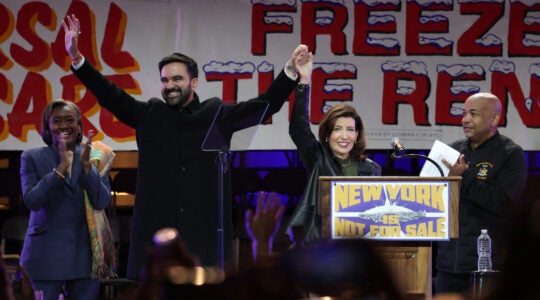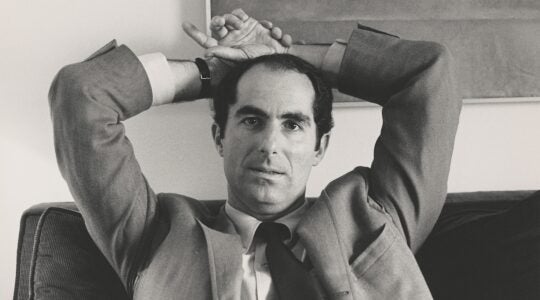As the late Pete Seeger sang numerous times, quoting the book of Ecclesiastes, “there is a time to be born and a time to die.” We always knew that there would come a time for Pete to die. Still, it hurts to say farewell to him. He was, in the words of Bob Dylan, “forever young,” and it stings to say farewell. Pete singlehandedly changed the way that Americans understood and experienced folk music, transforming audiences into communities. The day that he died, I happened to put my IPod on shuffle, and I counted the number of artists on there whose work had been influenced, directly or indirectly, by Pete Seeger, and I lost count. Dylan, the Byrds, Bruce Springsteen. Had there been no Pete Seeger, there would have been no Llewyn Davis.
All of which brings us back to one of Pete Seeger’s greatest hits, “Tzena Tzena,” and its “secret history.”
As many people know, Pete Seeger was the driving force behind the folk group, The Weavers, which also included Ronnie Gilbert, Lee Hayes, and Fred Hellerman. When I was in college, one of my favorite albums was “The Weavers At Carnegie Hall,” which was already 20 years old at the time. By the time my friends and I had finished passing it around, its grooves were worn out practically to the other side.
The Weavers recorded the Israeli song “Tzena Tzena,” and it reached No. 2 on the Billboard magazine charts. The flip side, “Goodnight Irene,” reached No. 1. This was unprecedented and unrepeated. No Hebrew song had ever gotten onto the charts, nor has it happened again.
The song’s composer was Issachar Miron, who was born in Poland in 1919. In 1941, while serving in the Jewish Brigade of the British forces in Palestine, he composed the melody for lyrics written by Yechiel Chagiz. The song became popular in Palestine and was played on the Israeli radio. “Tzena Tzena” echoed Song of Songs 3:11 — “Tzenah u’r’enah b’not Tziyon” —“ O maidens of Zion, go forth and gaze upon King Solomon,” as well as Tzene-Rene, the Yiddish “women’s bible” of the 16th century.
“Go out, go out, go out, girls, and see soldiers in the moshava (a rural settlement). Do not, do not, do not hide yourself away from a soldier, an army man.”
On the lips of the Weavers, something happened to “Tzena Tzena.” True, they sang in it Hebrew. The Hebrew pronunciation was actually pretty good. But they added a new — and utterly inaccurate — translation:
“Tzena, Tzena, Tzena, Tzena,
Can’t you hear the music playing
In the city square?
Tzena, Tzena, Tzena, Tzena,
Come where all our friends will find us
With the dancers there.
Tzena, Tzena! Join the celebration.
There’ll be people there from every nation.
Dawn will find us laughing in the sunlight,
Dancing in the city square.
Tzena, Tzena, come and dance the hora.
Dance the dabkeh. All of us will dance together.
Tzena, Tzena, when the band is playing,
My heart’s saying, “Tzena, Tzena, Tzena!”
Some say that Julius Grossman penned this new translation. Others say that it was the work of famed lyricist Mitchell Parish, who was a Jewish immigrant from Lithuania and who also composed the lyrics for “Star Dust” and “Stars Fell On Alabama.”
A song with clear military implications has been transformed into a general song of rejoicing. There are no soldiers in this translation. Moreover, the song has become universal in scope. People from every nation will be dancing.
There were to be other musical renditions of “Tzena” — from Vic Damone, Mitch Miller’s Orchestra, and a humorous version recorded by the Smothers Brothers.
So, what are we to make of the “de-militarization” of “Tzena?” While Pete Seeger was a famous pacifist, he did not write the new and inaccurate lyrics. Whatever feelings Pete might have had about the Israeli military (and, later, the Palestinian cause), those feelings did not prevent him from visiting Israeli military bases to perform.
When “Tzena” first appeared in 1946, it was a year after the liberation of the death camps. Within one year, Jews had gone from striped pajamas to army fatigues. That sartorial transformation represented a profound moment in Jewish history and self-understanding. The return to the Land of Israel had an erotic element to it as well: a love affair with the Land and the re-masculinization of Jewish men — from victims to soldiers.
The success of “Tzena” came from a specific American moment, when all people of good will (and yes, even and especially socialists) saw Israel as the embodiment of hope. We are ever grateful to Pete Seeger and the Weavers for putting our language onto the charts.
In an interview (http://forward.com/articles/191700/pete-seegers–most-jewish-songs/) Pete stated that his favorite Jewish text was the famous quote from Pirke Avot: “If I am not for myself, who will be for me? And if I am only for myself, what am I? And if not now, when?” Pete wished that Jews would teach that text, not only to their own children, but to others as well. Pete really had a sense of Jewish duty and of Jewish mission.
One final word. The final stanza of the “bad” translation of “Tzena” contains references to people dancing both the hora and the dabkeh, a popular Arab line dance.
More than 60 years ago, the lyricist envisioned a time when people (Jews and Arabs?) would dance the hora and the dabkeh together.
He got that right. If only.
Jeffrey K. Salkin is a writer and rabbi of Temple Beth Am in Bayonne, N.J. His best-known book is “Putting God On The Guest List: How To Reclaim the Spiritual Meaning of Your Child’s Bar or Bat Mitzvah” (Jewish Lights).
The New York Jewish Week brings you the stories behind the headlines, keeping you connected to Jewish life in New York. Help sustain the reporting you trust by donating today.





